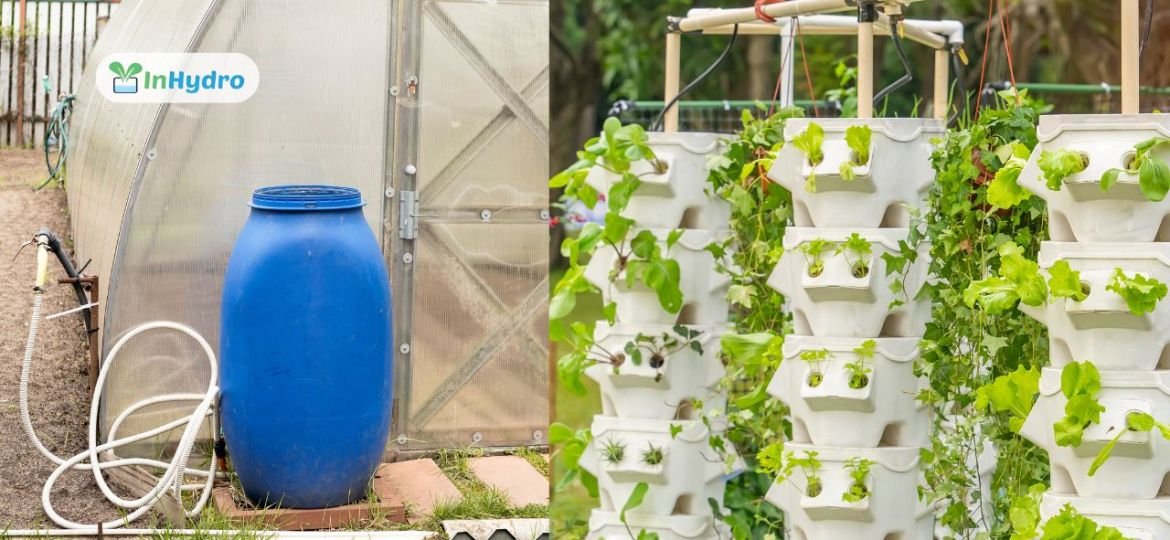
Rainwater Harvesting & Hydroponics: A Perfect Match for Sustainable Agriculture
Water scarcity and environmental concerns are driving the need for resource-efficient farming solutions. Rainwater harvesting and hydroponics together create a sustainable, cost-effective, and eco-friendly approach to modern agriculture. By integrating rainwater collection into hydroponic farming systems, growers can significantly reduce water consumption, minimize dependence on freshwater sources, and enhance sustainability.
This article explores how rainwater harvesting supports hydroponic farming, its benefits, setup considerations, and practical implementation.
Why Combine Rainwater Harvesting with Hydroponics?
1. Water Conservation & Reduced Dependency on Groundwater
- Hydroponic farming already uses 90% less water than traditional soil farming.
- Rainwater collection provides a free and renewable water source, reducing reliance on municipal or groundwater supplies.
2. Cost Savings & Sustainable Water Management
- Using harvested rainwater lowers water bills and eliminates the cost of transporting or treating groundwater.
- Reduces the environmental footprint by preventing overuse of groundwater resources.
3. Ideal Water Quality for Hydroponics
- Rainwater is naturally soft and free from chlorine, fluoride, and heavy metals, making it ideal for hydroponic nutrient solutions.
- Proper filtration and pH adjustments ensure it meets plant needs without contamination.
4. Climate Resilience & Drought Mitigation
- In regions with irregular rainfall, harvesting rainwater ensures a stable year-round water supply.
- Buffers against droughts and water restrictions, providing consistency for commercial hydroponic farms.
How to Set Up Rainwater Harvesting for Hydroponics
Step 1: Collecting Rainwater Efficiently
- Install gutters and downspouts on rooftops, greenhouses, or shade net structures.
- Use rainwater collection tanks with proper filtration systems to remove debris, leaves, and contaminants.
- Larger farms can implement underground reservoirs or modular storage tanks for long-term use.
Step 2: Filtration & Purification
Before using rainwater in hydroponic systems, it must be filtered and treated to maintain optimal plant health.
Recommended Filtration Methods:
- Mesh Filters & Sediment Traps: Remove dirt, leaves, and debris.
- Activated Carbon Filters: Eliminate organic contaminants and odors.
- UV Sterilization or Reverse Osmosis (RO): Kills bacteria and pathogens.
- pH Adjustments: Rainwater tends to have a low pH (5.0–5.5), so pH buffers may be needed to maintain a 5.5–6.5 pH range for hydroponics.
Step 3: Integrating Rainwater into the Hydroponic System
- Store treated rainwater in food-grade tanks connected to the hydroponic reservoir.
- Automate water flow with pumps and float valves to regulate levels.
- Monitor EC (Electrical Conductivity) to ensure nutrient balance when mixing with a hydroponic solution.
Benefits of Rainwater Harvesting for Hydroponic Farmers
- Water Security: Ensures a reliable and self-sustaining water supply.
- Lower Costs: Reduces dependence on municipal water, saving money on irrigation.
- Improved Plant Health: Chlorine-free, naturally soft water improves nutrient uptake.
- Eco-Friendly Farming: Contributes to sustainable agriculture by reducing water wastage.
- Drought Resistance: Protects crops from water shortages during dry seasons.
Conclusion
Combining rainwater harvesting with hydroponics is a smart, sustainable, and cost-effective solution for modern agriculture. It enhances water efficiency, promotes eco-friendly farming, and supports long-term sustainability. Whether for commercial farms, urban greenhouses, or home-based hydroponic setups, utilizing rainwater ensures a resilient and environmentally responsible farming future.
Would you like a detailed setup guide for your specific hydroponic farm? Let me know!

